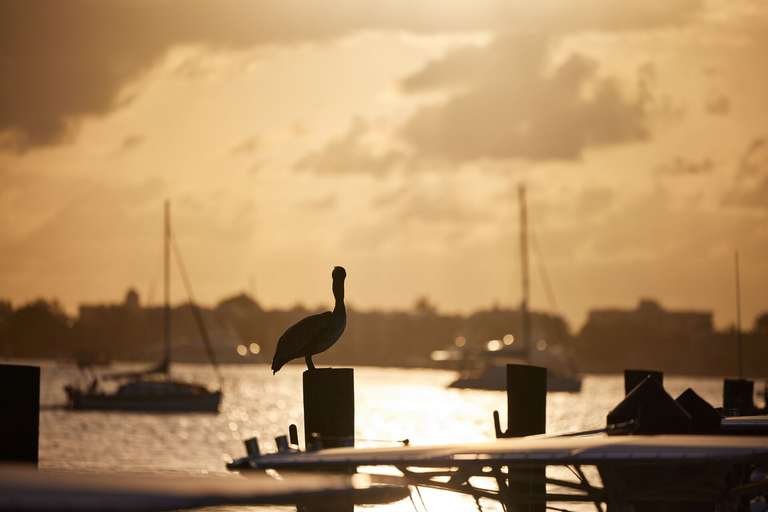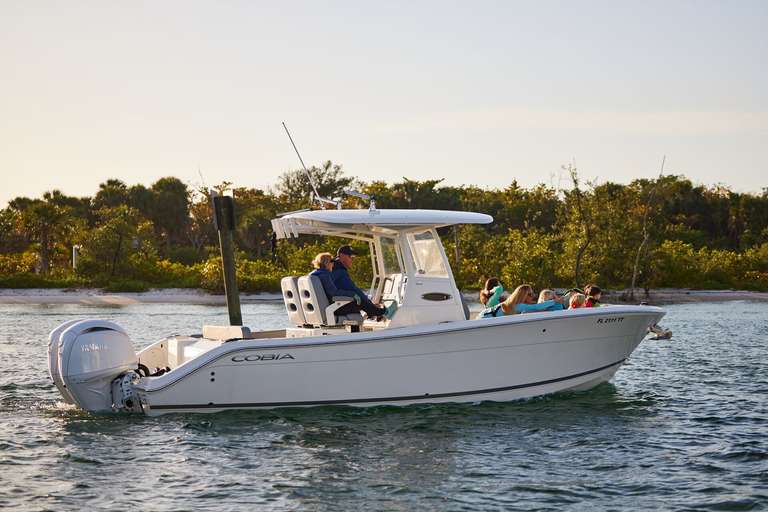The Boat Safety Equipment Checklist (For Every Boat Adventure)
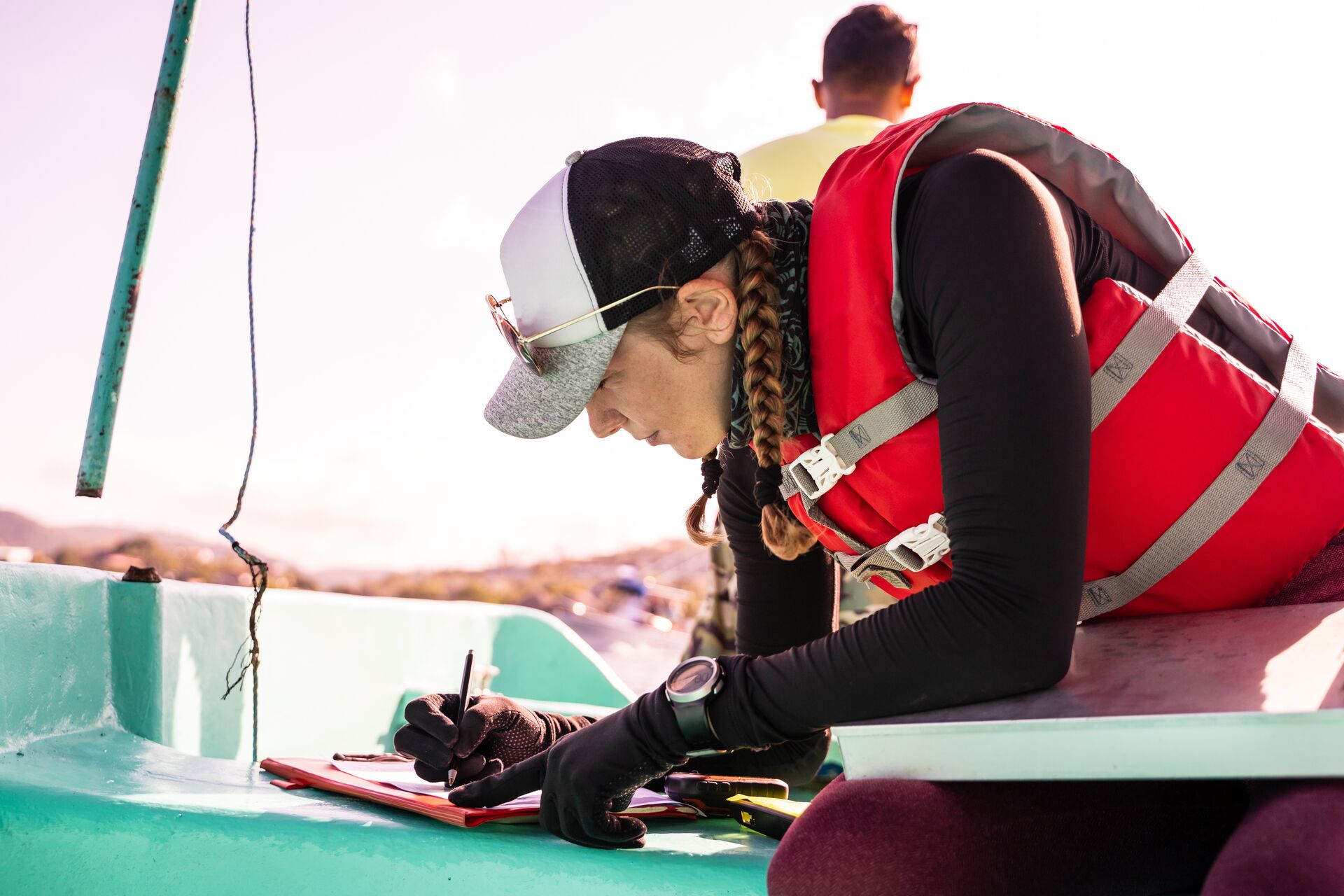
Ready to get out on the water? Before you do, it is vital to plan accordingly.
A pre-departure checklist will help you be prepared at all points in your boating adventure. In addition to carrying crucial items on your boat that can help you stay safe on the water (like life jackets for everyone on board), many state and federal regulations require boats to have specific safety items for legal operation.
So, what should be on your boat safety equipment checklist? What safety checks should you complete before hitting the water? We outline some of the most critical items you need and systems to test below! We also provide a link to a downloadable checklist to help you plan each adventure on the water.
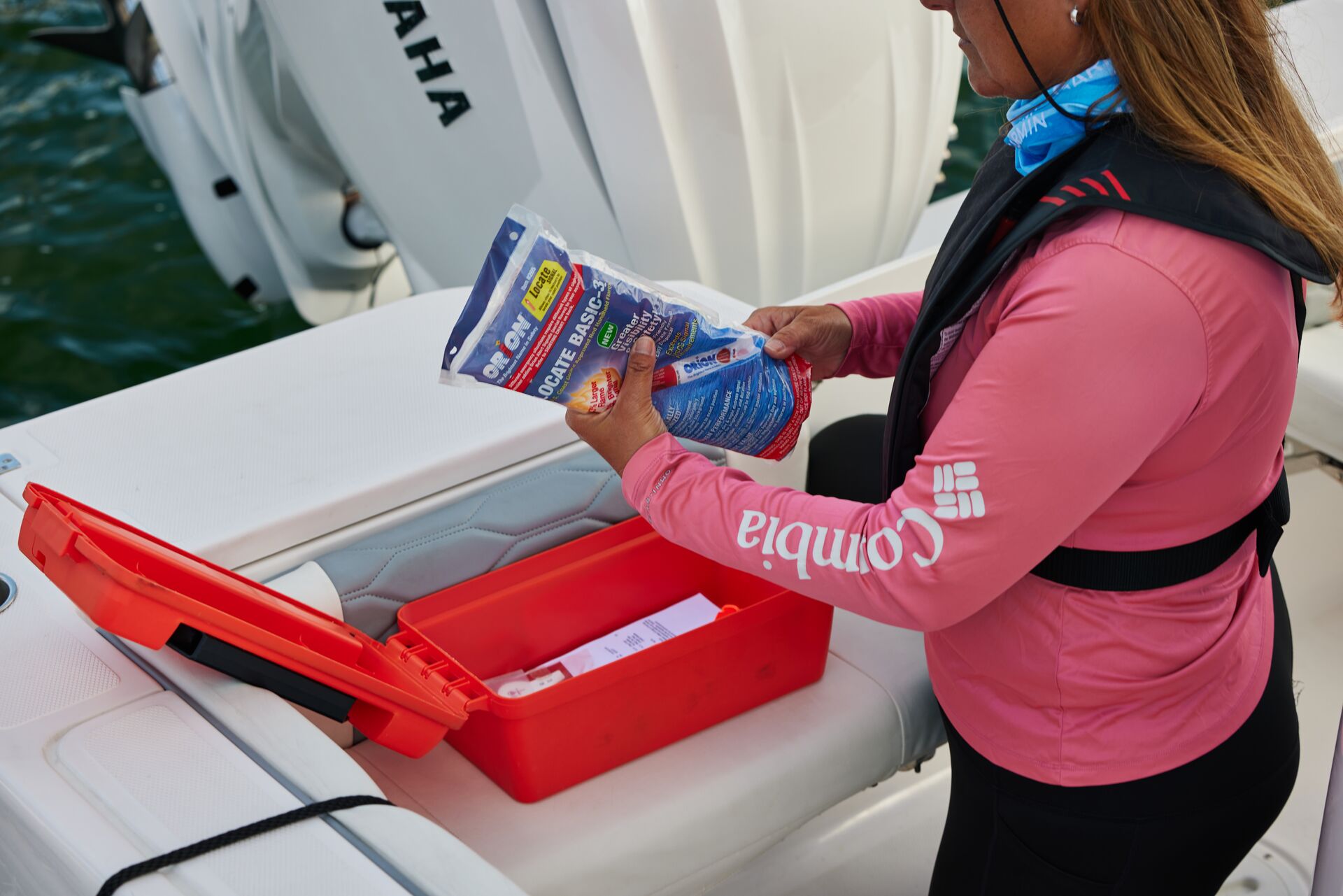
What Are the Critical Boat Safety Equipment Checklist Items and Tasks?
Heading out for a day on the water without these critical items can leave you without something you need to keep yourself and your passengers safe on the water.
For example, if a fire breaks out onboard, you need a fire extinguisher to quickly put the fire out before it has a chance to spread and sink your boat, putting everyone on board in danger.
We've compiled some of the items most commonly included on a pre-departure checklist to help you get ready for your next water adventure. However, not every person, boat, or trip is the same. So, make sure to include all additional items that you know are necessary for your situation.
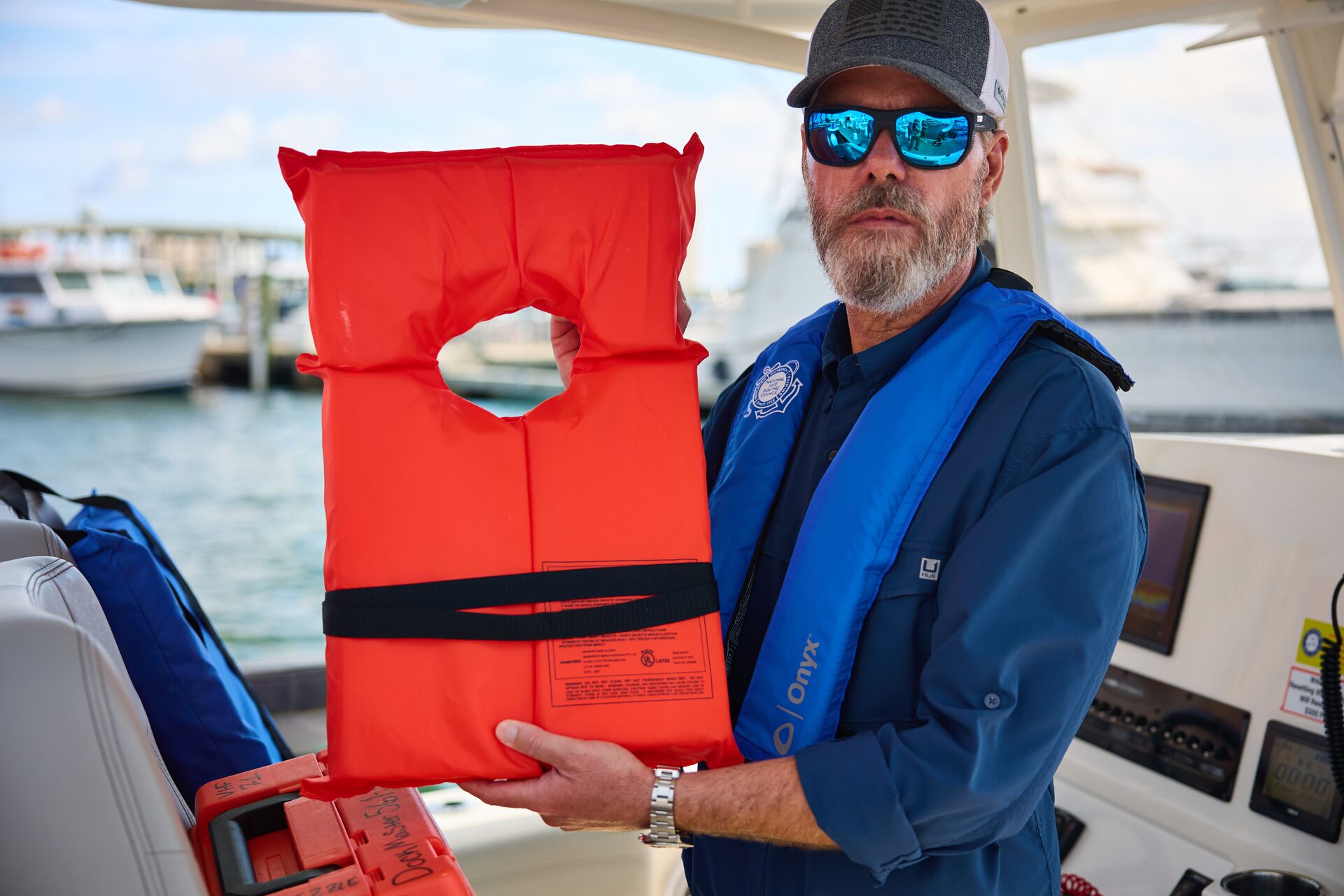
Personal Flotation Devices (Life Jackets)
Life jackets save lives!
When boating, keep these tips in mind for the personal flotation devices (PFDs) you need on board:
- At least one U.S. Coast Guard–approved personal floatation device is required on board per passenger. The minimum number of PFDs required is two, regardless of the number of people on board.
- Boats over 16 feet long must also have a throwable Type IV PFD on board.
- All passengers should know where the PFDs are located.
Make sure life jackets fit the people who will be on board so they have the best chances of functioning properly if needed.
Sound-Producing Devices
Your boat must be able to signal other boats when navigating nearby or when you need help.
Be sure to carry:
- At least two sound-signaling devices (i.e., an air horn, bell, or whistle).
- A spare can of compressed air if your sound signal is an air horn.
The type of sound devices you need can depend on the type of boat you operate.
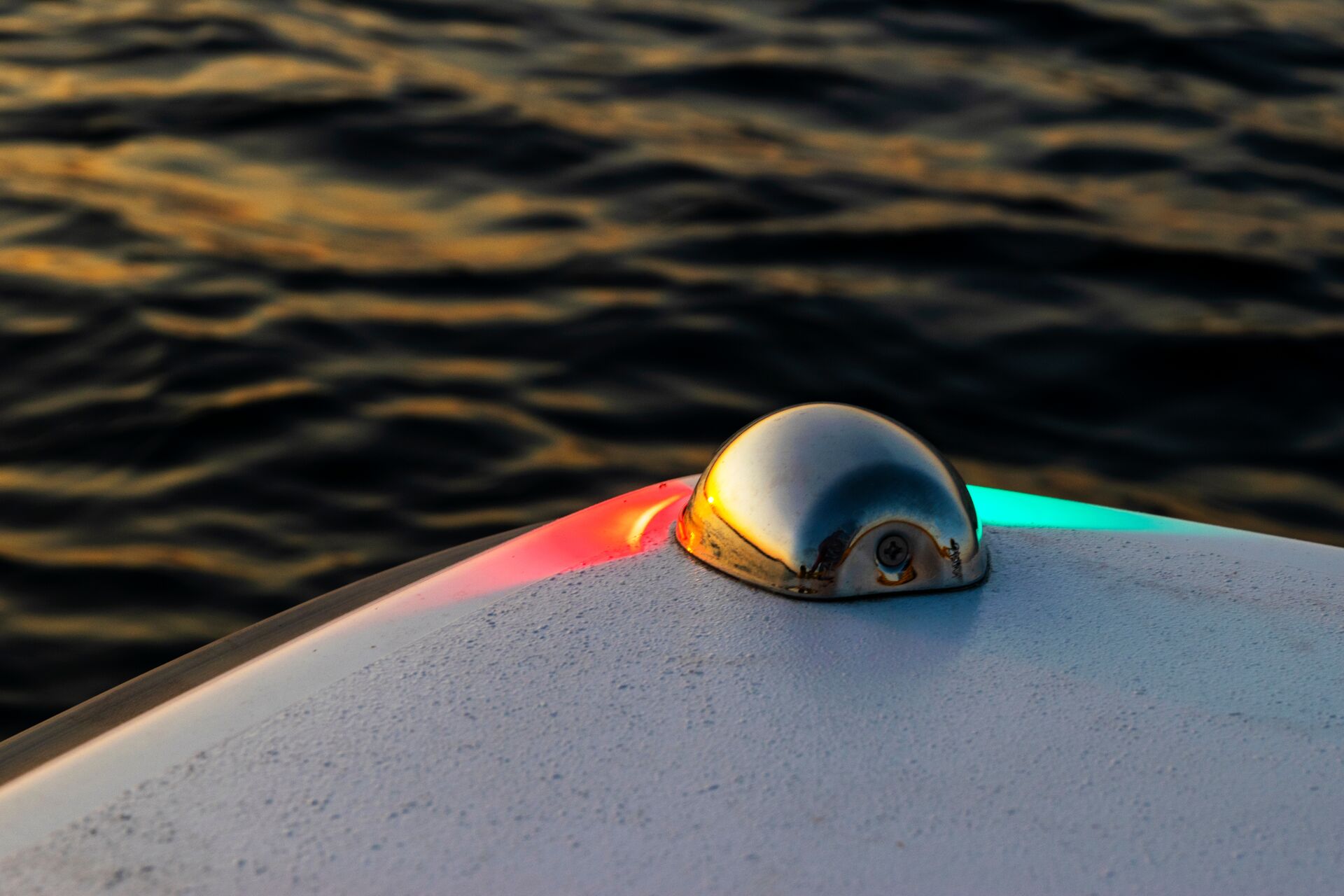
Lights and Distress Signals
Most motorized vessels need specific lighting to comply with regulations. Lights help your boat become more visible at night and communicate to nearby vessels.
Make sure all navigation lights meet requirements and are in working order. Always carry a backup flashlight on board.
Additionally, all passengers must know how to use and locate distress signals. Flares should be stored in a dry, easily accessible location.
Docking and Anchoring Items
Does your boat have everything it needs to dock or anchor safely?
All boats must have one anchor attached to an anchor line. Always inspect anchor lines before going out on the water.
You'll also need two fenders for docking. As with anchor lines, always check the fenders before getting out on the water. We also recommend having some spare dock lines on board.
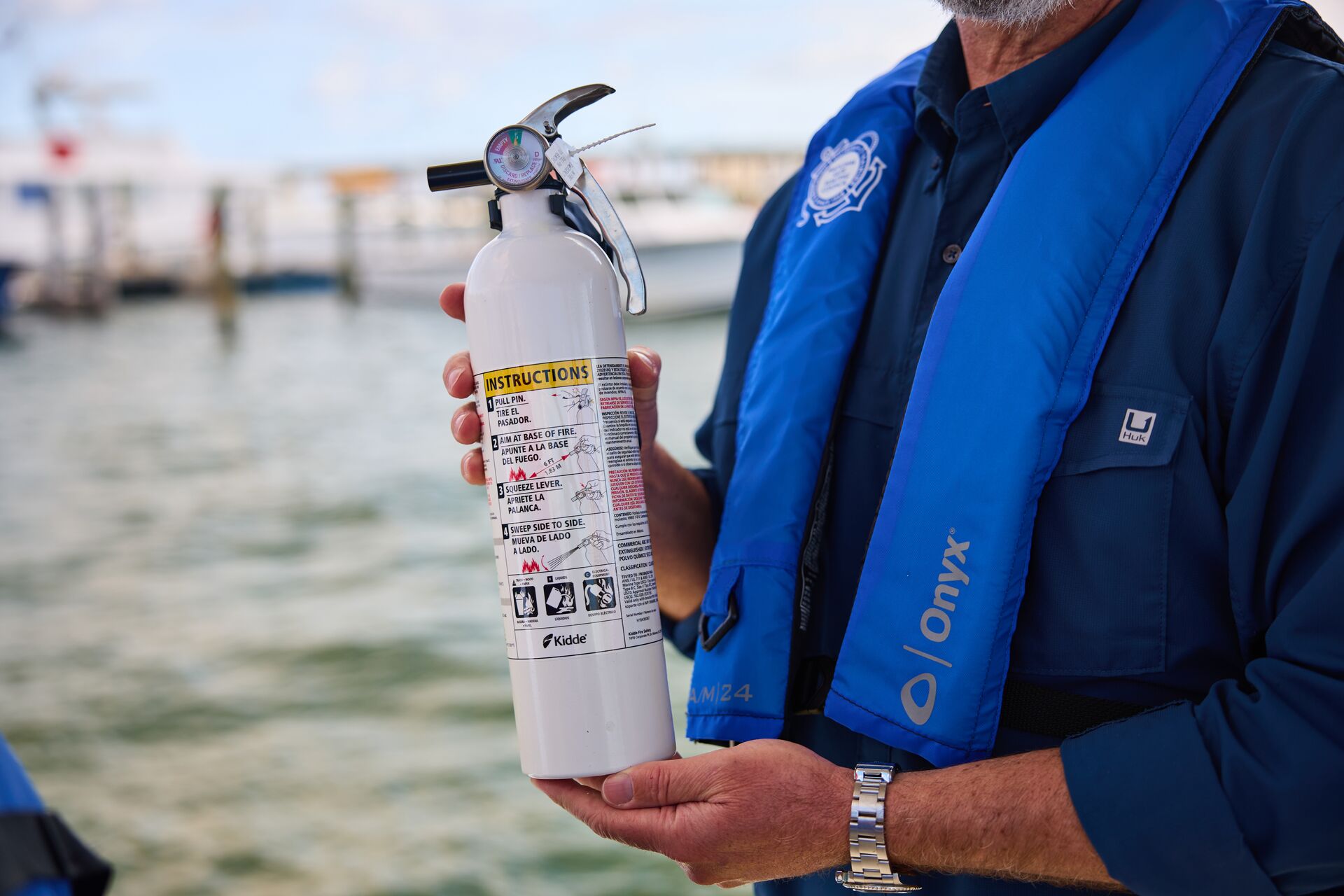
Fire Extinguishers
We mentioned fire extinguishers earlier, and they are one of the most important pieces of safety equipment to carry on board. Fires on boats can be some of the most dangerous situations to be in, so it's crucial to act quickly if a fire starts on your boat.
Keep these tips in mind:
- If your boat is required to have a U.S. Coast Guard–approved fire extinguisher, make sure it is stored in an accessible place.
- Know your fire extinguisher's expiration date and replace it when necessary.
- Make sure it is securely mounted.
Also, notify passengers of the fire extinguisher's location. If a fire happens, whoever is closest to the fire extinguisher should be able to grab it and use it.
Check Ventilation Systems
Proper ventilation on powered vessels is crucial for smooth, safe operation.
- On powered vessels, make sure enclosed spaces are well-ventilated.
- Run the blower for four full minutes before turning on the inboard engine.
- If fumes are present after blowing, look for a leak or spill.
If the ventilation systems aren't working properly when testing, do not take your boat out on the water until the issue is resolved.
Tools, Fuel, Oil, Bilges, Batteries, and More
You'll also want to check various systems on your motorized vessel before launching for a day on the water. While these may not technically be safety "equipment," these safety "checks" are crucial for boating safely
- Always have a toolbox on board with spare parts, including fuel filters and light bulbs.
- Ensure the bilge is dry and clear of waste and that your bilge pump works correctly.
- Always check fuel, oil, and coolant levels before departing for the trip.
- Make sure the battery is fully charged before departing.
Additionally, make sure all battery-powered equipment is working and that you have spare batteries.
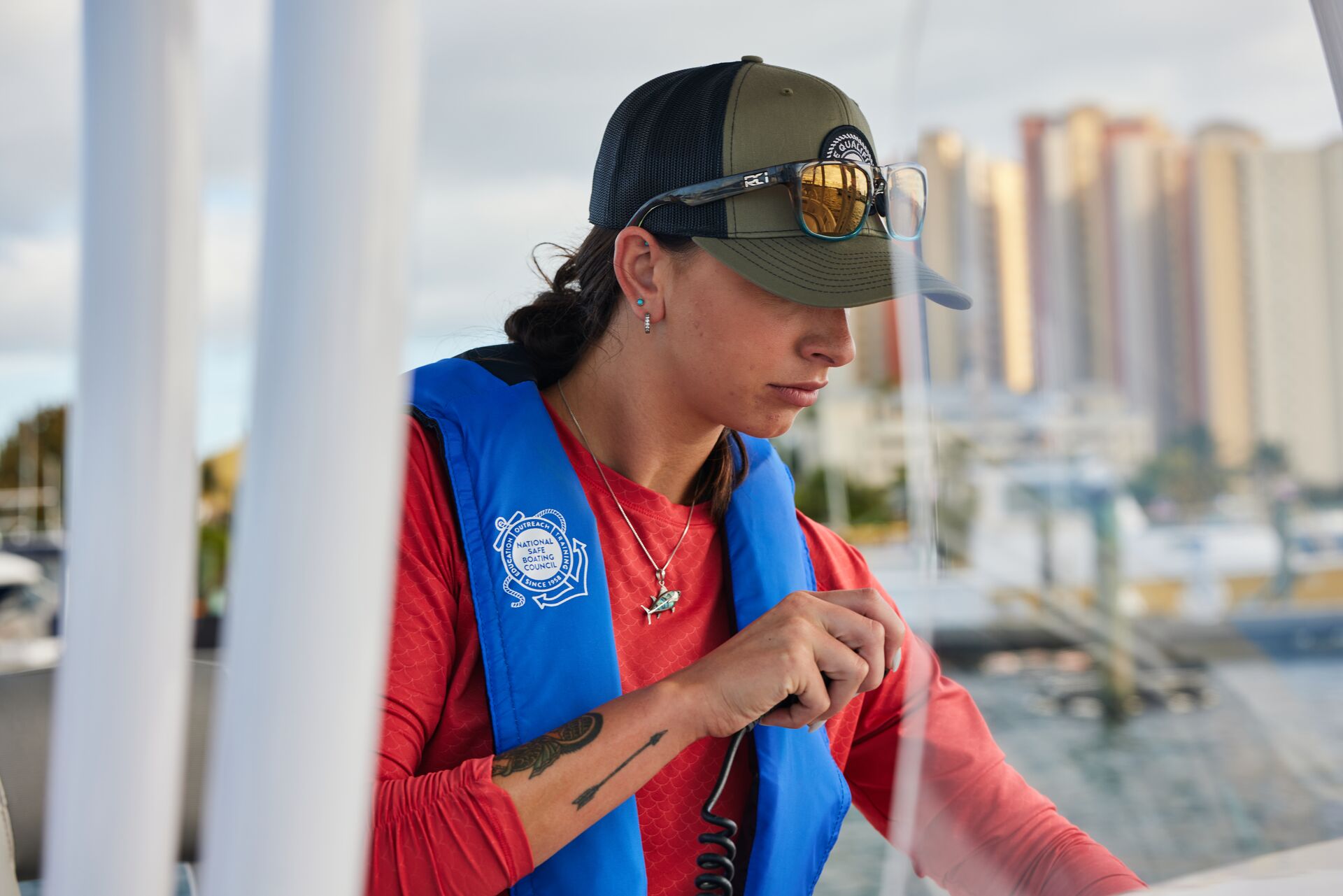
Emergency Boat Operation
You never know when something could go wrong while boating — even when checking all systems before leaving the dock. So, it's best to prepare everyone on board to know how to respond in an emergency.
Before launching:
- Inform passengers of all emergency procedures.
- Carry a VHF radio and know how to use it.
- Always keep a well-stocked first-aid kit in an easily accessible location.
The idea isn't to cause panic or scare anyone — it's to make sure everyone understands what to do if something goes wrong so everyone returns safely to the dock.
Check the Weather Forecast
Being safe on the water includes boating in safe conditions. Boating in bad weather or when you see a small craft advisory can lead to an accident or overturned vessel.
Before launching for a boating adventure:
- Always know the weather forecast in your area before getting on the water.
- Keep a handheld radio handy and regularly monitor the weather.
It's better to boat another day than to risk your safety by being on the water in bad weather.
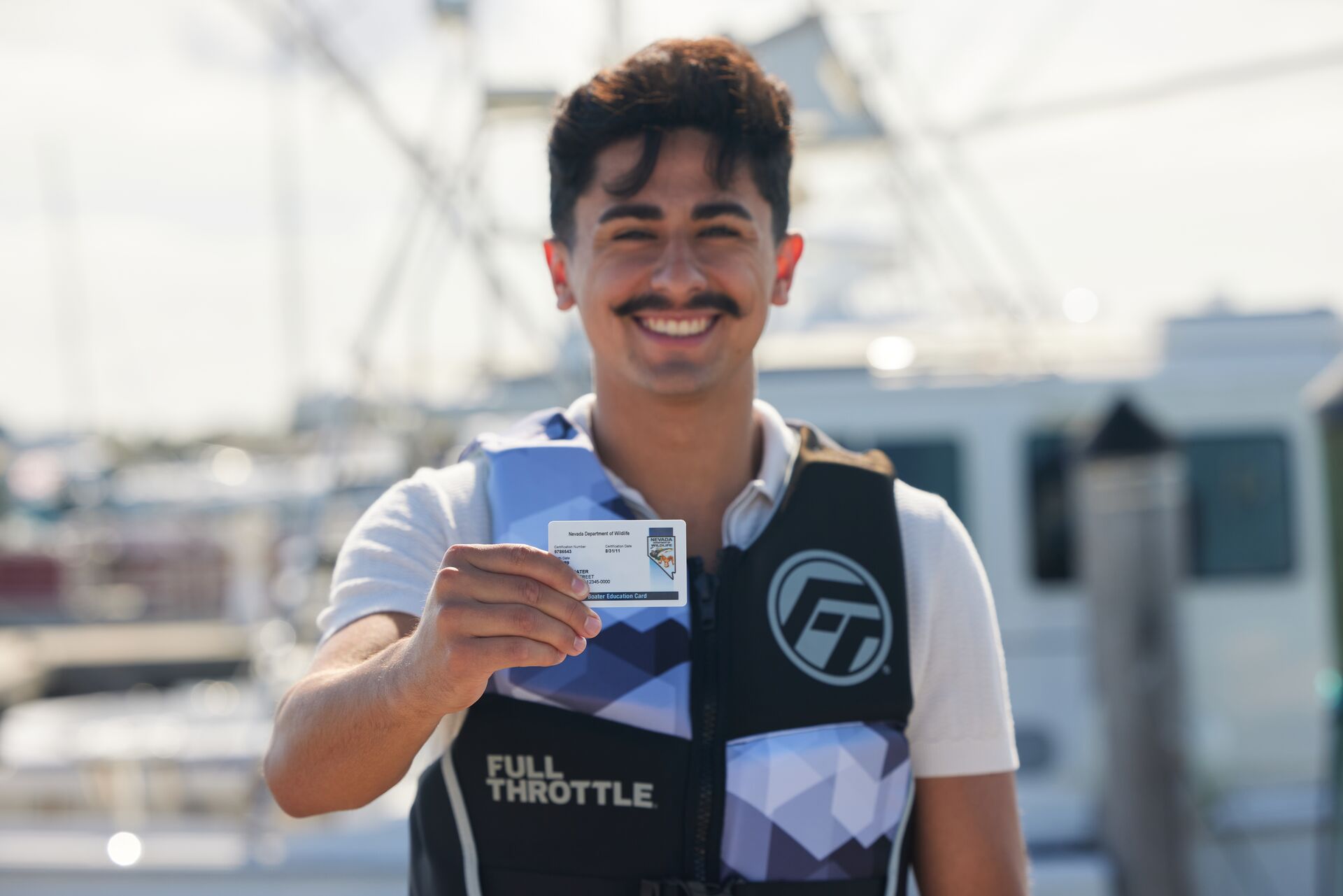
Carry Documentation and File a Float Plan
Boat operators must carry proper documentation to comply with local, state, and federal regulations.
Remember to:
- Always carry your boater education card, boat registration, radio license, and documentation for activities such as fishing.
- Make sure you have local charts for quick reference.
Additionally, file a float plan with someone staying on shore while you're on the water. The plan should include passenger names, boat information, when you plan to return, and where you plan to venture while on the water.
We hope this overview of boat safety equipment and checks is helpful!
Download this checklist and remember to complete one every time you get out on your boat!
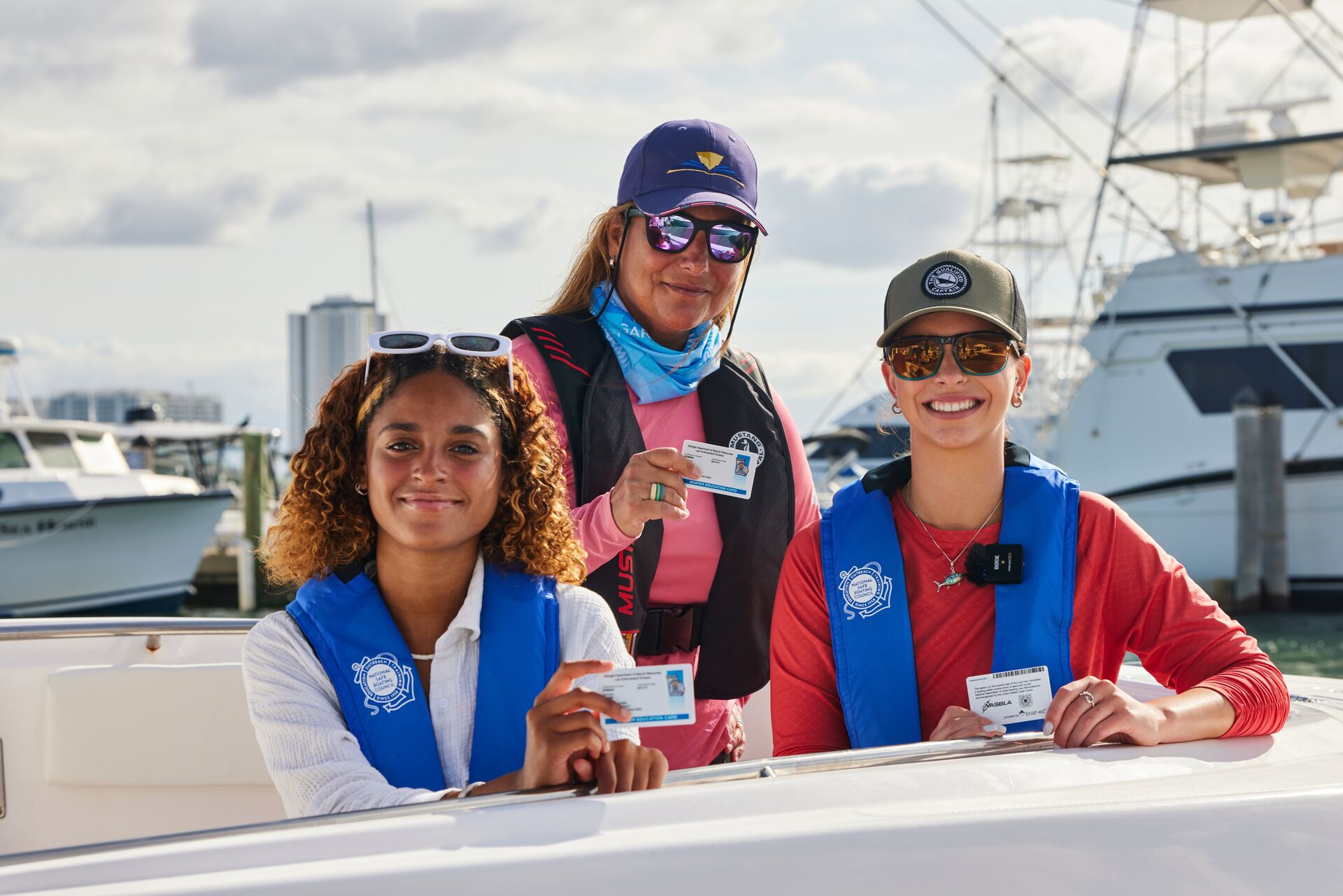
Get Your Boater Education Card with ilearntoboat
To make sure you have the documentation we mentioned above, you'll need to pass a boater education course and carry a boater education card.
ilearntoboat makes it easy (and fun) to do that!
Our online, gamified course is an engaging way to learn the boating safety information your state requires to boat legally. So, as you work through your boat safety equipment checklist and tasks before your next water adventure, choose the ilearntoboat course for your state and start learning.
First published in 2021. Content most recently reviewed and updated for relevancy and accuracy September 20, 2024.

